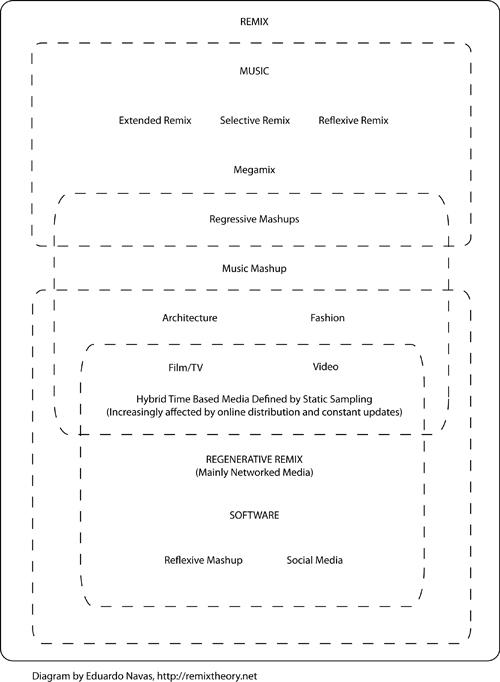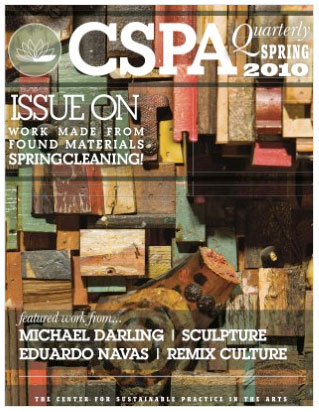Regressive and Reflexive Mashups in Sampling Culture, 2010 Revision, by Eduardo Navas
Download a high resolution version of Diagram in PDF format
This text was originally published on June 25, 2007 in Vague Terrain Journal as a contribution to the issue titled Sample Culture. It was revised in November 2009 and subsequently published as a chapter contribution in Sonvilla-Weiss, Stefan (Ed.) Mashup Cultures, 2010, ISBN: 978-3-7091-0095-0, Springer Wien/New York published in May 2010.
It is here republished with permission from the publisher and is requested that it be cited appropriately. This online publication is different from the print version in that it is missing images that help illustrate the theory of Remix that I propose. I do encourage readers to consider looking at the actual publication as it offers an important collection of texts on mashups.
I would like to thank Greg J. Smith for giving me the opportunity to publish my initial ideas in Vague Terrain, and Stefan Sonvilla-Weiss for inviting me to revise them as a contribution to his book publication.
This version brings together much of my previous writing. Individuals who have read texts such as The Bond of Repetition and Representation, as well as Turbulence: Remixes and Bonus Beats will find that many of my definitions and theories of Remix are repeated in this text. I found this necessary to make sense of a fourth term which I introduce: the Regenerative Remix. Those who have read the previous version of this text may like to skip pre-existing parts, and go directly to the section titled “The Regenerative Remix.” However, all sections have been revised for clarity, so I encourage readers to at least browse through previously written material.
An important change has been made to this text. In the original version I argued that Reflexive Mashups were not remixes. In 2007 I did not know what Reflexive Mashups could be if they were not remixes in the traditional sense, but after consideration and rewriting, I developed the concept of the Regenerative Remix. To learn more about this change in my definition of Remix as a form of discourse I invite readers to consider my revised argument. I also introduce a chart (above) which helps explain how Remix moves across culture. I also include an entirely new conclusion which will clarify my earlier position on software mashups.
A note on formatting: The text below is set up in simple text form. This means that italics and other conventions found in print publications are missing. If you would like to read a print ready version, please download a PDF file.
———-
Introduction
During the first decade of the twenty-first century, sampling is practiced in new media culture when any software users including creative industry professionals as well as average consumers apply cut/copy & paste in diverse software applications; for professionals this could mean 3-D modeling software like Maya (used to develop animations in films like Spiderman or Lord of the Rings); [1] and for average persons it could mean Microsoft Word, often used to write texts like this one. Cut/copy & paste which is, in essence, a common form of sampling, is a vital new media feature in the development of Remix. In Web 2.0 applications cut/copy & paste is a necessary element to develop mashups; yet the cultural model of mashups is not limited to software, but spans across media.
Mashups actually have roots in sampling principles that became apparent and popular in music around the seventies with the growing popularity of music remixes in disco and hip hop culture, and even though mashups are founded on principles initially explored in music they are not straight forward remixes if we think of remixes as allegories. This is important to entertain because, at first, Remix appears to extend repetition of content and form in media in terms of mass escapism; the argument in this paper, however, is that when mashups move beyond basic remix principles, a constructive rupture develops that shows possibilities for new forms of cultural production that question standard commercial practice.










